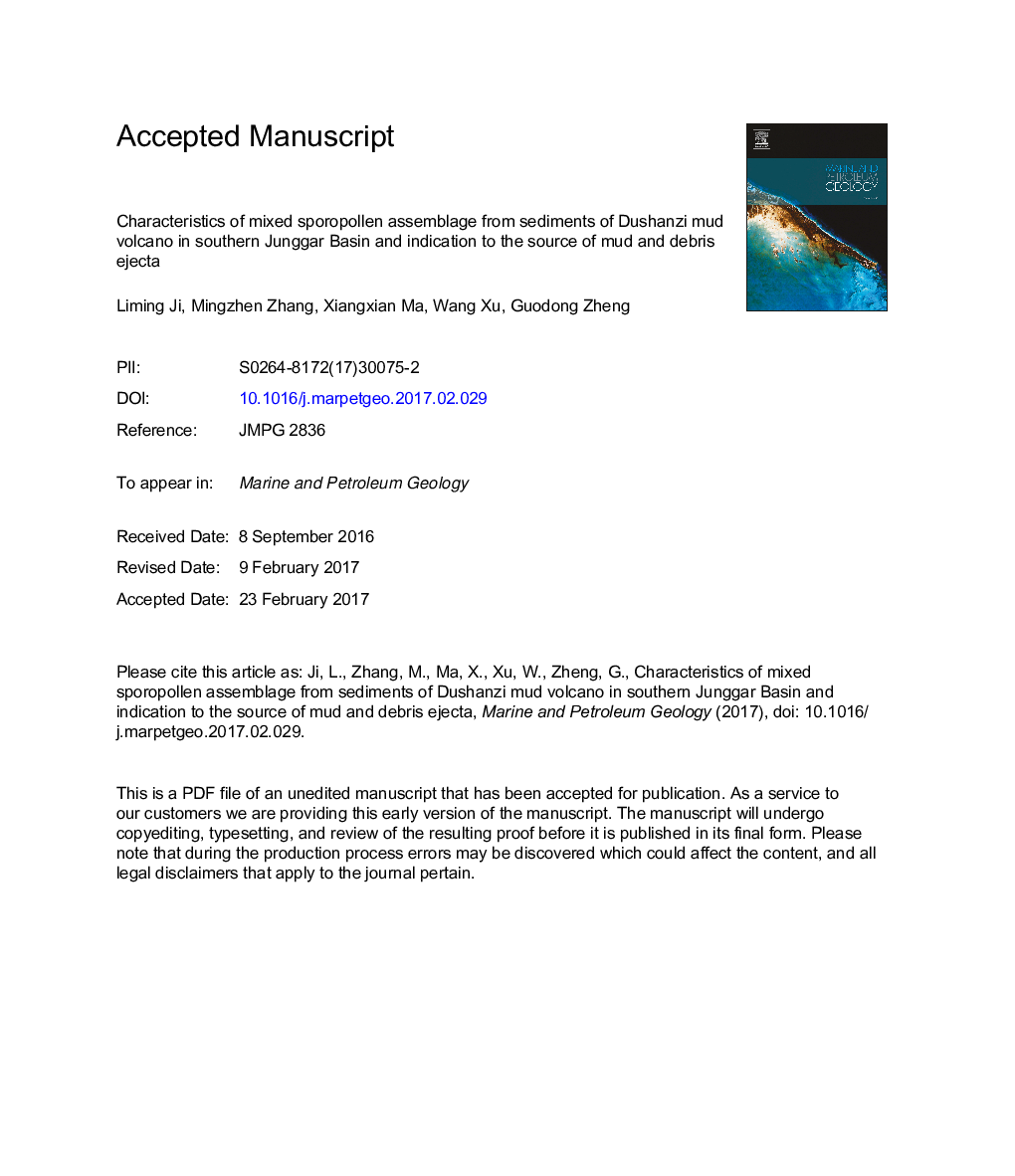| Article ID | Journal | Published Year | Pages | File Type |
|---|---|---|---|---|
| 8909311 | Marine and Petroleum Geology | 2018 | 27 Pages |
Abstract
In order to search for the source of muddy eruption debris, a series of erupted mud samples were collected from a corn of the Dushanzi mud volcanoes in southern Junggar Basin, NW China and analyzed for palynological records. Two palynomorph groups were revealed in the mixed sporopollen assemblage from the erupted sediments according to their colors. The light color group, accounting for about 95% of the total, was dominated by the Chenopodiaceae and Artemisia and in a color of faint yellow, indicating an immature stage of organic matter evolution. The dark color group was composed of Cyathidites, Classopollis, Schizaeoisporites, Lygodiumsporites and Rugubivesiculites, in a color of brown yellow, indicating a low maturity to maturity stage of organic matter evolution. The palynomorph records suggested that most of the muddy debris ejecta of the Dushanzi mud volcano might be sourced from the Cenozoic deposits, mainly the Middle-Late Miocene Taxihe and Dushanzi Formations, and a small portion likely from the Lower Cretaceous Tugulu Group. In addition, there is also a possibility that a little part of eruption debris is from the Upper Jurassic Qigu Formation. The Dushanzi anticline occurred strong extrusion and thrust faults in the late Himalayan period, and the oil and gas reservoirs were destroyed and resulted in eruption of the mud volcano in the Dushanzi area.
Keywords
Related Topics
Physical Sciences and Engineering
Earth and Planetary Sciences
Economic Geology
Authors
Liming Ji, Mingzhen Zhang, Xiangxian Ma, Wang Xu, Guodong Zheng,
